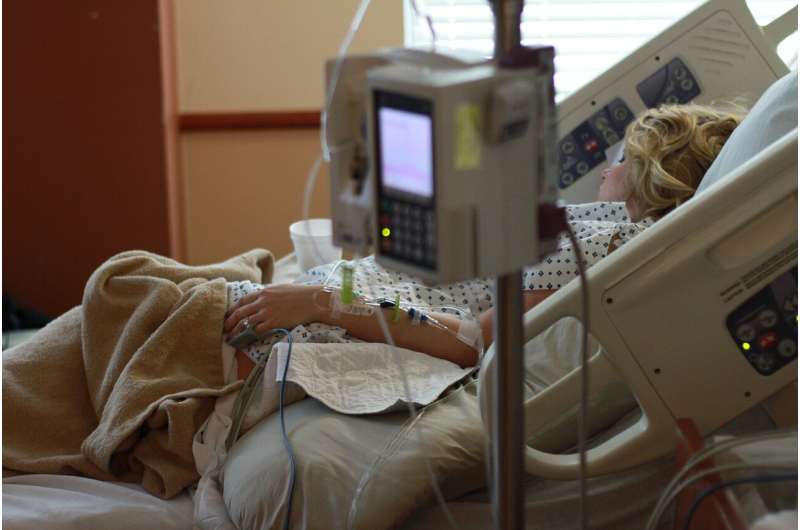Study finds age, race disparities in hospital patient portal use

Removing the barriers of access to technology does not close the digital divide for African American and older patients, according to new research from The Ohio State University College of Medicine.
As part of a larger examination of patient portal use, this study published in the journal Telemedicine and e-Health looked at the use of patient portals while people are admitted in the hospital. Over a one-year period, researchers found patients age 60 and over used the portal less than patients ages 18 to 29, and African American patients used the portal less than white patients.
"Patient-facing technology like inpatient portals are intended to engage patients in their health care by improving communication with the care team and allowing them to access test results, progress notes and other information in their medical records," said Daniel Walker, assistant professor of family medicine and biomedical informatics in CATALYST, the Center for the Advancement of Team Science, Analytics and Systems Thinking in Health Services and Implementation Science Research in the College of Medicine. "The lack of use of this technology may be limiting its ability to improve health and health care."
The overall study has been led by Ann Scheck McAlearney, professor of family medicine and executive director of CATALYST, and was funded by the Agency for Healthcare Research and Quality. McAlearney explained, "This large, pragmatic, randomized and controlled trial has been recruiting patients admitted to six Ohio State University Wexner Medical Center hospitals over the past two years. It enables us to examine various factors influencing patients' and providers' use of and experience with the patient portal, including identifying these disparities we have found."
Patients enrolled in the study used a hospital-provided tablet with a password-protected patient portal application they could access. Patients were not prompted to use the patient portal by the study team. To measure portal usage, researchers looked at the total number of tasks completed during the hospital stay such as logging into the application, sending messages to the care team, viewing test results, ordering meals and accessing tutorials. The 60 to 69 age group used the inpatient portal 45 percent less than the 18 to 29 age group and the 70 and over age group used the inpatient portal 36 percent less than the 18 to 29 age group. African American patients used the portal 40 percent less than white patients.
"When we looked at the data, we saw older patients used the tutorial feature more than younger patients signifying older patients may need more training resources in order to increase use," Walker said. "The use disparity between African American and white patients suggests the differences in use may be more nuanced and not simply an access issue. Additional intervention is needed to close the digital divide."
Future analyses will explore the factors that contribute to the age and race disparities to help develop educational interventions to close the gap in technology use.
"There's been a rapid growth of technological resources to help patients manage their health," said Dr. K. Craig Kent, dean of Ohio State's College of Medicine. "With continued innovation, it's vital that all patients, regardless of age or race, are able to use these tools that can significantly enhance communication and patient care. As helpful as these tools can be, the research of our team at Ohio State shows that we need to create approaches that are usable to all patients, regardless of age and race."



















